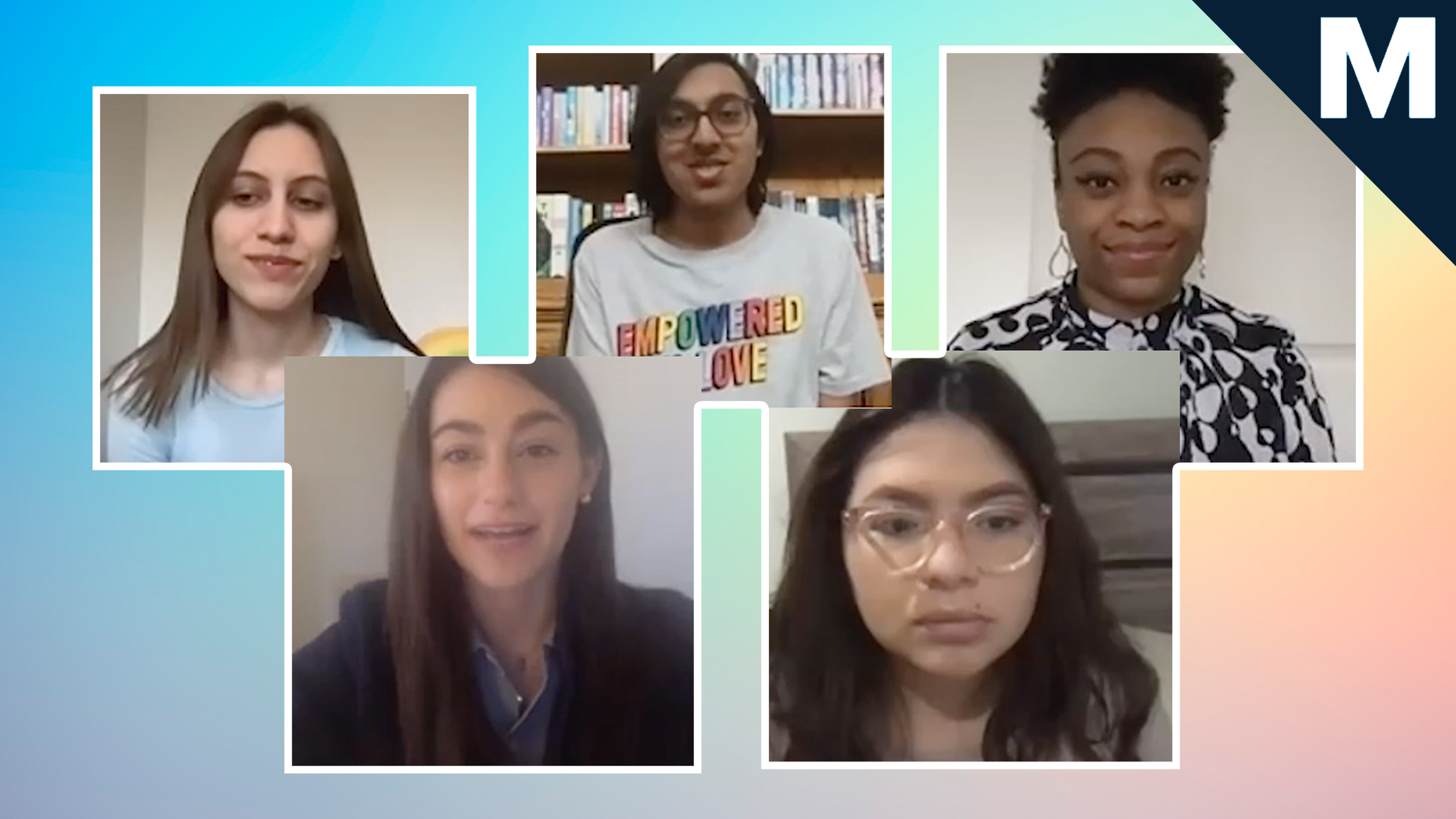As we enter the final weeks of 2020, we turned to four youth activists to discuss what youth-led social justice movements are planning for the new year. The panel, part of December’s Social Good Series focused on the future of youth activism.
The panel’s moderator, freelance writer Rainesford Stauffer, opened the conversation by asking the four activists – whose work ranges across issues like climate change, racial inequity, immigration, and LGBTQ rights — how the pandemic has affected their activism.
Alexandria Villaseñor is a 15-year-old climate activist and founder of youth-led climate organization Earth Uprising. Before COVID-19, Villaseñor participated in an 18-month long climate strike. Since March, she has focused on creating ways to engage young climate activists online, participate in digital strikes, and support peer-to-peer climate education.
Sameer Jha is the founder of The Empathy Alliance, a nonprofit dedicated to creating safer schools through education programs targeted at school officials and educators. Jha normally advocates for the rights and safety of LGBTQ youth through educational conferences and lobbying. But their activism has now transitioned to creating safe spaces for LGBTQ youth at home, and learning how to navigate the evolving nature of online and mixed schooling.
Luz Chavez, youth organizer for immigrant rights coalition United We Dream, explained that a lot of her work has focused on how to help immigrant and undocumented communities with basic needs during the pandemic, including food and resource drives in collaboration with local high schools.
And Sade Green, political activist and writer, has focused most of her activism on racial representation in politics and high-level decision making, with the goal to expand the political pipeline. She says that writing has been her main tool for activism, especially during the pandemic.
Stauffer invited each activist to discuss why young people are “uniquely positioned to be leaders” in the current political moment. The panelists all agreed: Young people will be the most affected by current policy decisions, so they deserve a voice in the decision-making process.
Both Green and Villaseñor said young people are also uniquely positioned outside of the “status-quo” of current American politics. “We tend to think outside the box because we haven’t been in this current system of solutions,” Villaseñor said.
Chavez agreed that new leaders offer alternative ways to move forward. “We need young people because we bring bold ideas, fresh ideas, passion, and courage to these spaces,” she said.
The four panelists also discussed the prevalent myths about youth activism: that young people are too young, too naive, or lack the experience needed to hold positions of leadership.
Green countered the criticisms by pointing out the vast legacy of young people who have been successful change-makers in American politics, people like civil rights leaders John Lewis, Ruby Bridges, and Claudette Colvin.
Jha said that young people’s idealism, often used by older politicians to criticize them for “asking for too much,” is not a product of naiveté. Instead, it’s a reflection of a generation that isn’t resigned to compromise. “I think older people have had to learn these systems of oppression and have internalized them because they’ve been in them for too long,” Jha explained. “We shouldn’t have to pick and choose between different people’s rights or basic equality. We should get everything.”
Villaseñor brought up the idea that the disconnect between generations involved in advocacy might be due to different communication styles, which make it hard to convey ideas to older leaders. “We use different narratives and references, and even our vocabulary is different. Older generations need to look past our generational differences, and they need to give us a seat at the table,” she said.
To round out the discussion, Stauffer asked each panelist to share what they feel is not talked about enough in political spaces.
Green wanted to make clear that Black organizers are not getting the recognition they deserve for fighting for racial, economic, and climate justice. She brought up Ugandan climate activist Vanessa Nakate, who was cropped out of an image used by the Associated Press from a press conference in Davos, Switzerland. “You can’t just erase us,” Green said.
Jha agreed that activists are too often silenced in mainstream conversations, and added that activism shouldn’t be viewed as “one or two people doing big things” but as “many people doing a lot of small things.”
Chavez said that young people should recognize the power of community advocacy.”When we are asking for solutions like abolishing ICE, passing a Green New Deal … it’s because we are asking for a necessity that comes from our lived experiences,” she explained.
Villaseñor ended with a call on older generations to step up for youth organizers: “We need older generations to support us. We need people to amplify our work, our efforts, and, even more important, the older generations to fund our efforts and our movements.”

